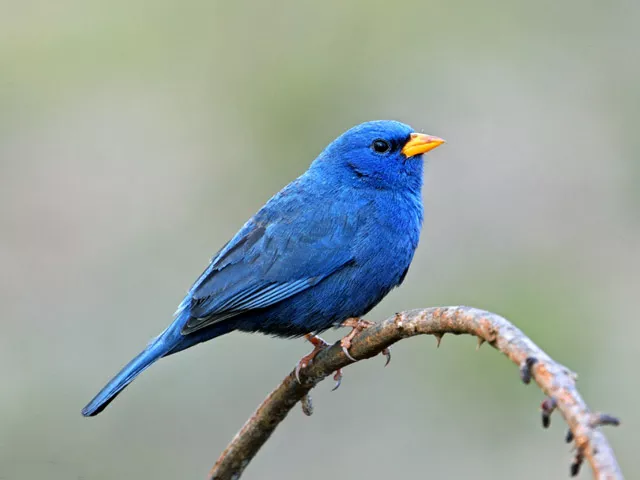Blue finches, also known as Blue Grosbeaks, are small birds that belong to the Cardinal family. These birds are native to North and Central America, and they are highly sought after by bird watchers due to their striking blue coloration. Blue finches are primarily seed-eaters, but they also consume insects and fruit when available.
The diet of blue finches varies depending on the season and availability of food sources. During the breeding season, which occurs from May to August, blue finches rely heavily on insects to provide the necessary protein for their young. They will feed on a variety of insects, including beetles, caterpillars, grasshoppers, and spiders.
In the fall and winter, blue finches switch to a seed-based diet. They will consume a wide variety of seeds, including those of grasses, weeds, and wildflowers. They are especially fond of sunflower seeds, which are a good source of fat and protein. Blue finches have strong bills that enable them to crack open even the toughest of seeds.
Blue finches are also known to eat fruit when it is available. They will feed on berries, such as those of the elderberry and mulberry trees. They may also consume fruit from ornamental plants in suburban areas.
In addition to their primary food sources, blue finches will also eat nectar from flowers. They have a specialized tongue that allows them to lap up the sweet liquid. This behavior is most commonly observed in the early spring when other food sources may be scarce.
Overall, blue finches have a varied diet that consists primarily of seeds and insects. They are adaptable birds that can take advantage of a wide range of food sources depending on the season and their environment. If you are interested in attracting blue finches to your yard, consider offering a variety of bird feeders with a mix of seeds and suet, as well as planting native trees and shrubs that produce fruit and attract insects.


 Facebook
Facebook  Instagram
Instagram  Youtube
Youtube 